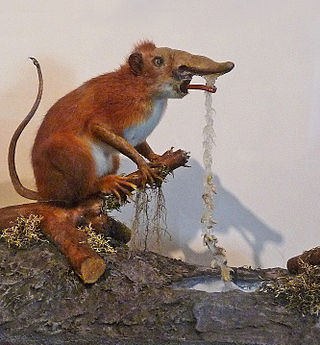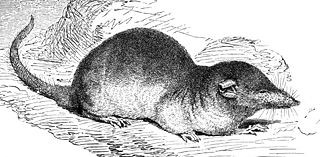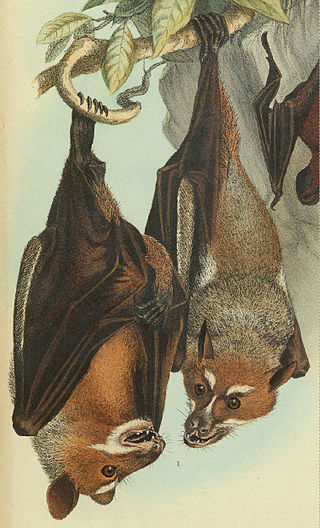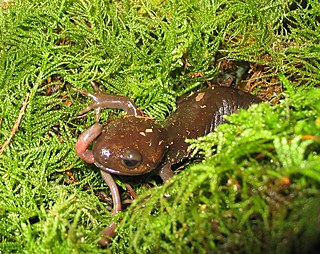
Rhinogradentia is a fictitious order of extinct shrew-like mammals invented by German zoologist Gerolf Steiner. Members of the order, known as rhinogrades or snouters, are characterized by a nose-like feature called a "nasorium", which evolved to fulfill a wide variety of functions in different species. Steiner also created a fictional persona, naturalist Harald Stümpke, who is credited as author of the 1961 book Bau und Leben der Rhinogradentia. According to Steiner, it is the only remaining record of the animals, which were wiped out, along with all the world's Rhinogradentia researchers, when the small Pacific archipelago they inhabited sank into the ocean due to nearby atomic bomb testing.

The Old World rats and mice, part of the subfamily Murinae in the family Muridae, comprise at least 519 species. Members of this subfamily are called murines. In terms of species richness, this subfamily is larger than all mammal families except the Cricetidae and Muridae, and is larger than all mammal orders except the bats and the remainder of the rodents.

The white-toothed shrews or Crocidurinae are one of three subfamilies of the shrew family Soricidae.

The genus Crocidura is one of nine genera of the shrew subfamily Crocidurinae. Members of the genus are commonly called white-toothed shrews or musk shrews, although both also apply to all of the species in the subfamily. With over 180 species, Crocidura contains the most species of any mammal genus. The name Crocidura means "woolly tail", because the tail of Crocidura species are covered in short hairs interspersed with longer ones.

The shrewlike rats, genus Rhynchomys, also known as the tweezer-beaked rats are a group of unusual Old World rats found only on the island of Luzon in the Philippines. They look a great deal like shrews and are an example of convergent evolution. Shrewlike rats evolved to be vermivores and insectivores feeding on soft-bodied invertebrates associated with leaf litter.
The Sulawesian shrew rat is a species of rodent in the family Muridae. It is the only species in the genus Melasmothrix. It is found only in central Sulawesi, Indonesia, and is known from the localities of Rano Rano and Mount Nokilalaki.

The long-tailed shrew rat is a species of rodent in the family Muridae. It is found only in Central Sulawesi, Indonesia, where it is known only from Mount Nokilalaki in Sigi Regency.

The Sunda shrew is a species of mammal in the family Soricidae found in Indonesia and Malaysia.

The Wallace's or Sulawesi stripe-faced fruit bat is a species of megabat in the family Pteropodidae. It is endemic to Sulawesi and the nearby Togian Islands of Indonesia. Cave paintings resembling these bats have been found in Australia, where bats of this kind are not otherwise known.

Vermivore is a zoological term for animals that eat worms. Animals with such a diet are known to be vermivorous. Some definitions are less exclusive with respect to the diet, but limit the definition to particular animals, e.g. "Feeding on worms or insect vermin. Used of a bird."

Paucidentomys is a genus of rodents of a type commonly known as shrew-rats which was discovered in 2012 in a remote rainforest on the Indonesian island, Sulawesi. The genus is monotypic, consisting of the species Paucidentomys vermidax, or the edented Sulawesi rat. The Latin name may also be translated to its other common name "few-toothed worm-eating rat", referring to the fact that they have only two teeth and may live exclusively on a diet of earthworms.
Waiomys is a genus of rodents from the family Muridae. It is endemic to Sulawesi, Indonesia. The genus is monotypic, consisting of the species Waiomys mamasae. It is known only from Mount Gandangdewata, Mamasa Regency, West Sulawesi.
The Javan ghost shrew is a species of mammal in the family Soricidae. It is endemic to Java where it is known only from Mount Gede and can be found from the type locality at 1,611 and 1,950 m elevation on Mt. Gede. Its natural habitat is tropical montane rainforest. It has a restricted range and is threatened by habitat loss. It was first described as a new species to science in 2016 and the authors recommended the name 'Javan ghost shrew' as its English common name."Relative to other Javan shrews, the new species is small with a relatively thick, dark brown, medium-length tail".
The Gag Island rat or Niken's rat is a species of rodent in the family Muridae. It is endemic to Gag Island in West Papua, Indonesia.

Hydromyini is a very large, diverse tribe of muroid rodents in the subfamily Murinae. They are the dominant native rodents in Australasia and one of only two native rodent groups there, the other being the R. fuscipes group of the genus Rattus in the tribe Rattini. They are also found in parts of Southeast Asia.

Rattini is a very large, diverse tribe of muroid rodents in the subfamily Murinae. They are found throughout Asia and Australasia, with a few species ranging into Europe and northern Africa. The most well-known members of this group are the true rats, several species of which have been introduced worldwide.
The Javan hidden shrew or Javan long-tailed shrew is a species of mammal in the family Soricidae. It is endemic to the island of Java in Indonesia.
The Karoko hill rat is a species of rodent in the family Muridae. It is found only in Sulawesi, Indonesia.













